How to distinguish a rose from a rose hip?

Rose and rose hips have a number of similarities. This is explained quite simply: they both belong to the same family and genus, and also have approximately the same branch height, varying within one and a half meters, and a tap root system.
Despite all the similarities listed, both of these plants are used in different ways. So, the rose performs an exclusively decorative function and pleases with the beauty of its owners, when, as rose hips, are often used to prepare healthy tea drinks that are high in vitamin C and have a beneficial effect on human health. How you can distinguish both of these plants from each other by leaves, thorns, flowering and shoots, we will tell in this article.
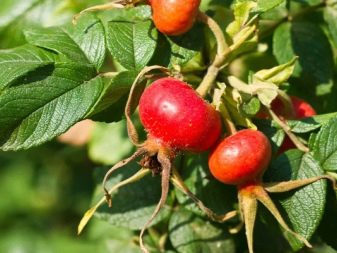

Difference by leaves
Distinguishing a rose from a rose hip is pretty easy. This can be done for a number of very different traits, because the differences in these plants are much more than similarities. And even the most inexperienced gardeners can find them, for this you need to carefully examine both bushes, noting all the discrepancies you see. So, the most obvious distinguishing features are the appearance of the leaves on the branches of the bushes of both, as well as their number. In general, the leaves of these plants are similar: they have an ovoid shape, their edges are serrated, the tips are wedge-shaped. In addition, the leaves of both rose hips and "pink" shrubs are pinnate and long-petiolate. However, it is not difficult to notice the differences between them.
So, on a branch of a rose hip bush, as a rule, there are only seven leaves, while, as on roses, their number can vary from three to five. Of course, there may be exceptions, especially when it comes to newly bred varieties of a given crop. On the branches of such plants, more leaves may be present. Interestingly, this not only distinguishes the “pink” shrub from the wild rose, but also suggests that the culture has good resistance to low temperatures, and therefore is more likely to survive frost and cold. It is because of the high frost resistance on the "rose" bush that you can notice more than seven leaves, which is usually typical for climbing rose varieties.
To distinguish a rose bush from a rose hip, you should pay attention to the appearance of the greenery of plants, namely, its structure. So, "pink" leaves, as a rule, are large, shiny, glossy and differ in their shade: they have a rich green, and sometimes even close to burgundy. But in the rosehip, the leaves are noticeably smaller, often you can see small thorns on them, which is why they look like terry.
Such leaves usually have a bright green hue, in addition, they are more dull and do not shine, which distinguishes them from the greenery of the "rose" bush.
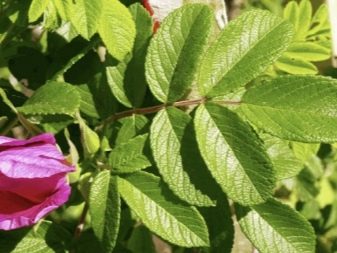
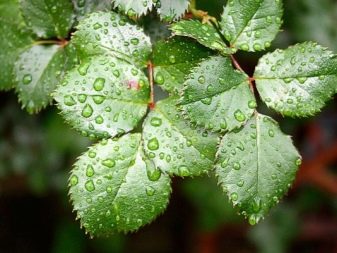
What is the difference during flowering?
During the flowering period, the dog rose and the "pink" shrub also differ from each other in many respects, in order to notice this, you just need to look at the crops as carefully as possible. So, to find the difference, first take a look at the flowers of the plants. As a rule, a rose has many petals, more than fifteen pieces. Usually they are grouped in the shape of a glass or a magnificently open hemisphere. At the same time, it is almost impossible to consider the middle in such flowers, with the exception of some varieties that were specially bred.At the same time, a rosehip flower has only five petals, and its middle can be seen without much effort - it can be identified by its characteristic yellow color. You can also distinguish the flowers of these plants by their shade. So, roses can be of a wide variety of colors: not only white and bright red, but also yellow, orange and even green, when, as rosehip inflorescences, as a rule, either white or pink - other shades are not typical for them.
There are other differences to look out for when comparing these two crops. These include the time during which both plants bloom. So, for the most part, this period in wild rose occurs in the last spring month, May. Garden roses bloom in summer, and some varieties also bloom in September. Rose hips, on the other hand, do not have a second wave of flowering. If we are talking about wild roses, then you can observe how they are covered with flowers only once a year.
At the same time, we note separately that the "pink" shrub does not bear fruit at all, while the rosehip bush begins to bear fruit in August, September or October, being at the same time at the age of two to three years, and this plant gives the most abundant harvest upon reaching four - six years old.

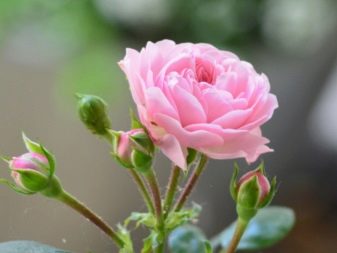
How to identify by shoots?
To correctly distinguish two crops from each other, we recommend paying attention to their shoots. Usually they are erect in a bush rose. However, if we are talking about climbing varieties, then their stems, on the contrary, are more flexible. The diameter of "pink" shoots usually varies between ten and fifteen millimeters. At the same time, young seedlings, as a rule, differ in burgundy, and over time they change color to greenish, after which they begin to lignify, and their color approaches brownish or, which was originally, burgundy. In addition, large and sharp, but infrequent thorns can be seen on them. Rosehip, in terms of shoots, differs in many respects from the "pink" shrubs. With him, they are usually greenish and do not lignify over time. However, it should be said that varieties of climbing "pink" shrub also often have green shoots. In this case, in order to find the differences between the two cultures, it is recommended to pay close attention to flowers, foliage and thorns.
The diameter of the shoots of the dog rose is not as large as that of the "pink" shoots: it usually does not exceed twelve millimeters. And the thorns on them are distinguished by their small size and frequency. It is worth paying attention to their tops: the shoots of erect varieties have a slight bend. In addition, the rose hip shoots very actively grow over the territory and capture it - this culture is a bit like weeds. It is worth saying that after the growing season, the dog rose requires a garter, since without it it will be less stable and will bend down to the ground. Roses are mostly erect, and therefore they do not need an additional garter.
Separately, we note that due to improper pruning or in frost, the "rose" bush can turn into a rosehip, and therefore it is not worth allowing the death of shoots in cold weather. For this, it is recommended to resort to the help of shelters made of agrofibre.
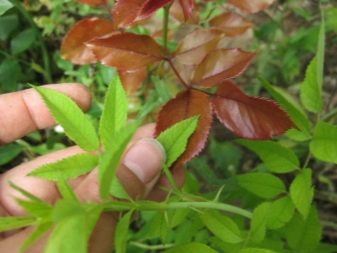

Comparison of thorns
Plant thorns are small undeveloped stems on the sides. As a rule, in rose hips, they are small and differ in their greenish-gray color. Usually there are a lot of them on the branches.
In "pink" bushes, the thorns are large, but not so frequent. The largest number of thorns can be seen in a wild-growing rose. However, these flowers have smaller thorns, and in some cases they can also be seen on the sepals.
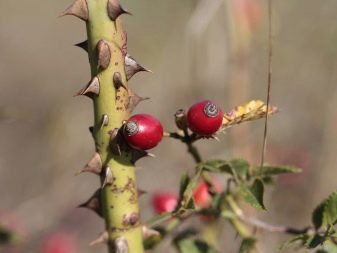
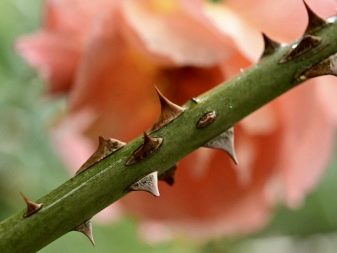
Tips for determining when buying
When purchasing varietal roses, it is important not to forget that almost all of them are grafted onto rose hips... For this reason, it may well happen that a decorative flower at one point will begin to change, overgrow with unwanted shoots, gradually turning into the plant on which it was previously grafted. To distinguish a rose from a rose hip when buying from a nursery, the first thing you need to do is this is to ask the seller about the seedlings you are interested in. From him you can learn about the features that are inherent in a particular variety of "rose" bush.
However, you may also come across an unscrupulous seller who will sell you a seedling, in the lower part of which there will be rosehip buds. Therefore, when buying, do not forget about the main differences between the two given cultures. Be sure to pay attention to the color of the shoots of young plants, their leaves and thorns. Otherwise, over time, the rose may begin to turn into a rosehip. In addition, it is worth taking a closer look at the seedling itself. As a rule, if it is of high quality, then the place of its inoculation is located under the roots. If you buy a plant in a special store online, then in this case you need to read the description of the purchased variety as carefully as possible. In addition, it will be useful to read books about plants or sites on related topics.
In general, almost all roses are prone to running wild. The only exceptions are self-rooted shrubs, the reason for which is the absence of rosehip stock in them, and therefore the peculiarities of the variety of such "rose" bushes remain unchanged.
However, we note that frost has a very unfavorable effect on the condition of such plants, which is why such roses require more attentive and high-quality care than all other varieties.
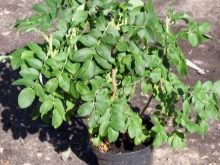



































































































The comment was sent successfully.